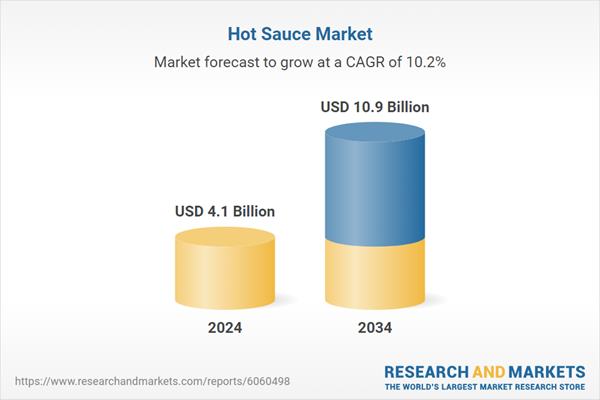Market expansion is further supported by demographic shifts and rising disposable incomes, especially in emerging markets. Consumers are showing a growing interest in clean-label and health-focused products, encouraging the rise of small-scale businesses catering to these preferences. Strategic marketing through social media and endorsements from influencers and celebrity chefs is also playing a crucial role in expanding consumer awareness.
Companies are strengthening product availability across supermarkets, retail stores, specialty outlets, and online platforms. Enhanced distribution networks ensure easy access to a wide range of hot sauces, catering to varying consumer needs and preferences. The market’s increasing affinity for spice-infused flavors is expected to drive demand in the coming years.
The hot sauce market is categorized by flavor type into table hot sauces, cooking sauces, and specialty sauces. Table hot sauces held the largest market share in 2024, accounting for 56% of global sales. Their popularity is attributed to versatility, cultural integration, and continuous innovation. These sauces are easily accessible and come in diverse flavors, appealing to a broad consumer base, including those who prefer milder spice levels.
Based on composition, the market is segmented into chili-based, vinegar-based, tomato-based, fruit-based, and other sauces. Chili-based sauces dominated the market, with a 57.9% share in 2024, as consumers favor them for their bold flavors and perceived health benefits. Chili peppers are known for their complex taste and natural heat intensity, making them a preferred ingredient in traditional cuisines across multiple regions. The rising interest in health-conscious eating trends has further boosted demand, as chili-based sauces are associated with metabolism enhancement and cardiovascular health benefits.
Packaging options include glass bottles, plastic jars, pouches, and others. Glass bottles accounted for USD 1.9 billion in 2024, largely due to their superior flavor retention and environmentally friendly nature. Glass packaging is preferred for gourmet and premium hot sauces, enhancing product appeal and sustainability.
Distribution channels include retail stores, online platforms, and food service. Online retail is set to experience the highest CAGR of 11.0% during the forecast period, driven by the expansion of e-commerce and the convenience it offers. Supermarkets and grocery stores remain dominant sales channels, providing a wide selection of brands and flavors.
U.S. hot sauce market is on a strong growth trajectory, expected to reach USD 3.1 billion by 2034, fueled by increasing consumer demand for bold flavors and emerging dietary trends. Consumers are increasingly drawn to unique, craft-style sauces while major brands continue to dominate the market. The expansion of online retailing and digital marketing is further accelerating market growth, making hot sauces more accessible than ever before.
Comprehensive Market Analysis and Forecast
- Industry trends, key growth drivers, challenges, future opportunities, and regulatory landscape
- Competitive landscape with Porter’s Five Forces and PESTEL analysis
- Market size, segmentation, and regional forecasts
- In-depth company profiles, business strategies, financial insights, and SWOT analysis
This product will be delivered within 2-4 business days.
Table of Contents
Companies Mentioned
The companies featured in this Hot Sauce market report include:- Campbell Soup Company
- Cholula Food Company
- Conagra Brands Inc.
- Grupo Herdez
- Heartbeat Hot Sauce
- Huy Fong Foods Inc.
- La Costeña
- Marie Sharp’s Fine Foods Ltd.
- McCormick & Company Inc.
- McIlhenny Company
- Pepper Palace Inc.
- The Kraft Heinz Company
- Torchbearer Sauces
- Truff
- Unilever
Table Information
| Report Attribute | Details |
|---|---|
| No. of Pages | 260 |
| Published | February 2025 |
| Forecast Period | 2024 - 2034 |
| Estimated Market Value ( USD | $ 4.1 Billion |
| Forecasted Market Value ( USD | $ 10.9 Billion |
| Compound Annual Growth Rate | 10.2% |
| Regions Covered | Global |
| No. of Companies Mentioned | 16 |









